
GALLERY
ABOUT US
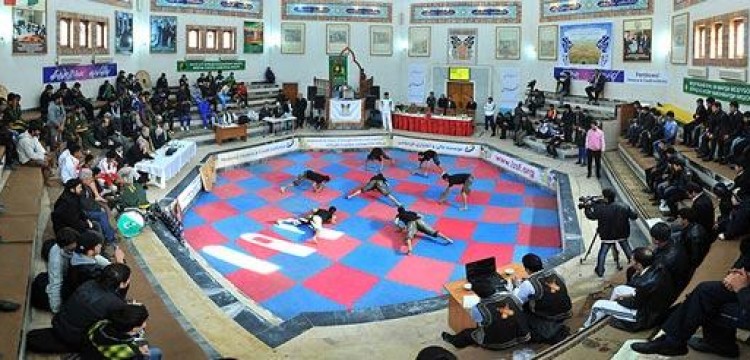
Thought, fatut, was a moral and social law that was created by free people – A class of Iranian nobles – It was implemented. This class consisted of warriors and small landowners who served in the guise of emirs and commanders, stewards and court guards. It is said that their moral characteristics were called freedom and chivalry. Freedom included the use of courage and passion for diligently taking on the defenseless, and chivalry contained a more abstract meaning that implied spiritual and moral honor.. /span>
Mohsen Zakari, Translated by Marzieh Soleimani; Jwanmardi or fatut, includes a wide group of associations and circles in the Islamic world, which at the beginning They started in the eastern regions and have special rules and rituals. Also, this term refers to the philosophical or ideological foundations of these associations; A type of moral system in which characteristics such as selflessness and altruism, generosity, generosity, and absolute loyalty to other members of the association prevail. A personal and specific name related to Fatut, Fatti or "boy" (Plural: Fethian) is. The present article is a translation of an article from Daneshnama Iranica, written by Mr. Mohsen Zakari, which, due to having detailed and general sources and headings on this subject, is for the readers. Persian language will be useful. At the end of this article, there was an important etymology, which was translated and edited due to its importance in the researches related to Fatwat and Sufism, and it is fully published here .
Fatut, during the time of the Prophet, did not exist as an independent, separable and identifiable institution (Kahn, 1959, pp. 32-34). Despite this, the word fatut is mentioned in the Qur'an (12:30, 18:60, 21:6- in the plural forms: Fatiya and Fatian: 12:36, 12:62, 18:10, 18:13), in the last These references, i.e. verse 13 of Surah 18 (Kahf), which talks about the Companions of the Cave, probably this word contains a praiseworthy meaning: "They were young men who believed in their Lord and We increased their guidance." .» Certainly, when commentators like Rashid al-Din Maibdi later interpreted this verse, they did so in the same way. Meybodi says that the Qur'an meant the body of several prophets, including Abraham, Joshua and Yusuf, and then he uses the opportunity to explain the verse of the Companions of the Cave to outline the general principles of chivalry (Meybodi, vol. 5, pp. 69 668-Tabari's translation, vol. 3, p. 940, both commentaries use the word "cavalier". In spite of the fact that these interpretations have been questioned due to some kind of attribution to the later semantic expansions in the Qur'an; It is certain that the word fatut in the pre-Islamic Arab world was sometimes used to refer to values such as generosity, hospitality, courage and solidarity, and it is also possible that in another situation – The Qur'an, to some extent, has introduced a new concept in the word that previously existed in the social environment of Arabia (Fars, pp. 80-79). In this connection, the importance of mentioning the name and later the nickname of Imam Ali Ibn Abi Talib (AS) as Sidalfatian is well known. A nickname that became popular in the battle of Uhud and after this famous saying of the Prophet: Lafti al-Aali... (Tabari, vol. 3, p. 1402, in translation: vol. 7, p. 120; Kohlberg, p. 846). However, fetut was originally an individual quality; A characteristic without any association or organization .
The use of the word fatut – with organizational and social concepts – It appeared outside of the Arabian Peninsula, in Iraq and Iran, and probably, therefore, has its roots in institutions that existed earlier in pre-Islamic times (Baldik, pp. 352-61). In this way, the theory has recently been put forward that the oldest record of the word fatut, with its implied meanings and connotations in Islamic culture, is found in the poetry of Bashar Bin Bard (d. 783); An Arab poet of Iranian origin ( Zakari, b 1995, pp. 303-4). If this is true, probably the Iranian Shaubites, like Bashar, were in the Islamic social environment in order to popularize fatwa as an institution left over from the Sassanid era.< br /> Based on this line of thought, fatut was a moral and social law that was created by freedmen – A class of Iranian nobles – It was implemented. This class consisted of warriors and small landowners who served in the guise of emirs and commanders, stewards and court guards. It is said that their moral characteristics were called freedom and chivalry. Freedom includes the use of courage and passion for diligently taking on the defenseless, and chivalry includesIt was a more abstract meaning that indicated spiritual and moral honor. On the other hand, in a reference to what were probably the predecessors of the knights; "The face that the Pahlavi commentary of Vidovdad (videvdad) presents to those who believe that stealing from the rich and giving to the poor is an admirable act. .» In the Islamic era, chivalry was often used as a synonym for terms such as ayari and azadi, which were used in Iranian society (Hanawi, pp. 161-63), probably a close semantic correspondence between the Persian word chivalry and the Arabic term fatut. , both of which are a combination of young meanings and moral refinement, can indicate a type of trust translation – This to that or that to this – knew But most likely, there has been a kind of fusion between similar traditions and concepts in these two .
An argument in favor of the probably Iranian origin of fatut, in the ceremony It is a formality that is enforced upon the arrival of new members and always involves wearing a belt. >, three times around the new member's waist, to show the three stages of religious practice and knowledge, which are known by the titles of Sharia, Tariqat and Truth (Tashner, 1979, p. 495; Masignon, "Shad"). Has a clear similarity with Kustig (Kustig) ; A belt worn by Zoroastrian men when they reach the age of fifteen as a sign of maturity and perfection. Castig is also wrapped three times around the waist as a sign of the three principles of "good speech, pendarnik and good deeds". (Debar, editor. Chapter 46) but it should be noted that there is a difference between these two actions and It is that it is used to name the ritual of Tashraf, and Kastig is a ritual of transition, and the other is that the meaning of Zoroastrian Kastig is to distinguish the noble and original parts of the body from its inferior parts. ; An element that Shad Fatut lacks. It is also worth noting that Salman the Persian (Arabic: فارسی) is usually recognized as someone who was responsible for arresting the companions of the Prophet (Massignon, 1963, trans. Anwala, p. 20) and this is probably a theory of exclusively Iranian origin. It supports Fatot more. But as it was mentioned earlier, Fatut in the days of the Prophet took the form of It had no organization. Regardless, many duties and roles, after death - in Complete lack of historical evidence - attributed to Salman Farsi. Fethian as an urban paramilitary association or force during the Banu Abbas and Umayyad periods. The military units that were formed during the Sassanid era and by the Azads, mostly remained intact and intact in the early Islamic period. And they placed the Arabs as assistants and clients under their umbrella. Arabs - just like they were in the days of their previous masters and employers - were hired by them to fight on the borders of the empire or to form a group of personal guards or aides in big cities like Baghdad and Kufa. (Gholman, Gholaman, Shakarieh, Mowali) or to establish a police force (Sherta, Ma'ooneh or "helping" Gran, construction) (Zhakri, b 1995, pp.
28 - 112). And it is in connection with these functions that we first hear the name of Fatian as an organized group, in reference to Basra in 683. In that year, the month of Farvardin (another form of the month of Afridun), the Iranian leader of the group of helpers in Basra addressed his followers as young men, a term that was translated into Fatian by the Arab narrator of the story (Muhammad ibn Habib, I, pp. 113-14; Tabari, I/1, p. 454, Zakari, I, p. 684, Ibn Qutiba, p. 414)
. ( Zakari, b 1995, pp. 265-88). After that, they were seen in all the different parts of Baghdad, under the leadership of a commander called Raees or Sahib al-Rab, who were engaged in ensuring public order and taking care of the poor in their own neighborhoods. (Balazari, p. 404). Also, they made an agreement with different and sometimes conflicting religious groups, a problem that not only justifies their participation in religious celebrations - in the form of joint groups - but also about Their role in the conflict Sectarian and factionalism - especially in the events of the siege of Baghdad in 813 - is also considered a good justification (Hoffman, pp. 27-44); Sheikh Musa, pp. 160-88, for a new study of the role of this fatian in the life of Baghdad and other urban centers, see Sabari, pp. 77-100; Kahn, 1959).
Al-Fatiyan Allahoun were "societies" consisting of pleasure-loving youths who apparently lacked the moral principles of fatwat, and the only exception in this case was loyalty to the group. From the beginning of the 8th century, On the other hand, chronicles and letters of literature talk about rich and mostly unmarried young people who started to form special associations. These associations were dedicated to enjoyment, fun and entertainment. They called themselves Fatian al-Saddeq and swore to support their friends in times of need and to keep the content of their negotiations and meetings secret from outsiders (Ebrahim Bayhaqi, pp. 248-53; Abbas bin Al-Ahnaf, p. 256). Their rules of conduct, including recommendations for eating, drinking and behavior. It was performed in public in a timely manner by a person named Qazi al-Fatiyan, and this name, without a doubt, was chosen to mock the official judges who were called by this name by Bani Abbas. dir="LTR">. (Jahiz, 1958, p. 67, Abuhian Tawhidi, 1965, p. 175, ibid., 1966, IV, p. 171). They assumed that with the Iranian name Daskara (daskara) which means "property". Mastery» It was known. (Taschner, 1979, pp. 610, 208, 206, and 86). One of the affiliated members of these circles was the famous Iranian musician and singer Ebrahim Mosuli (in the past 804), who was known by his colleagues as al-Fati al-Mosuli (Abul Faraj Esfahani, < span dir="LTR">V, pp. 188 and 56-154).
The presence of the Christian singer Hanin Heiri (died around 728) among The Fatians of Najaf and the welcome that the Fatians of Homs gave to Hanin when he visited their city, shows that the Fatians of Allahoun were of the same faith, or at least they allowed the participation of non-Muslims in their circles. "LTR">. - 341).
Among the hedonistic interests of Fetians, archery and hunting - especially with trained hunting dogs - had a high status and were Specially, this hunt often causes them to meet with the authorities. They wore special clothes (Ziya al-Fatyan), dyed and greased their hair, and later used a cane they carried with them. (meksara) was called, they were recognized (Ibn Qutiba, I, p. 299; Ibn Abd Rabbah , V, p. 48; Abul Faraj Isfahani, I, p. 408, number 7). Many of these characteristics of al-Fatiyan al-Hun can be found in the person of the musical poet, Ibn al-Tabib (d. around 844). He enjoyed hunting with hounds, warming up with lute players and hanging out with camels (Kotbi, I span>, pp. 163-64). Here, the existence of the term Shattar (singular: Shattar) indicates that this word may sometimes be used as a synonym for Fethian. Around the year 984, Abu Hanin Tawhidi describes Shattar not only as strong young men who used to lift heavy stones and while waving their long mustaches, with an aggressive attitude. to speak; Rather, in his description, he calls them the claimants of bravery and chivalry. "LTR">I, pp. 168 - 69).
Fatut of the border regions
This branch of fatut, especially in Khorasan, It was concentrated in Sistan and beyond the river and acted as the ideal of Al-Wahdat Bakhshi, which emphasized asceticism, steadfastness, selflessness, courage and patience. This asceticism, which was initially proposed by local associations of armed warrior men, with the claim of spreading Islam; It included both volunteers and permanent members of the Corps. They were called by different names: Ghazian, Mujahidun, Murabatun, Motwaweh and Ayaran. But Vasili and Barthold (pp. 215-214) called them "the guild of warriors of the way of faith". has mentioned The main origin of these groups can be found in the auxiliary forces that were created by the Umayyad Banu and the early rulers of the Banu Abbas in the border areas - that is, where their own military resources were limited. In the time of peace, these peace helpers, for whom fighting was a way of life and the only source of income, easily changed their nature, turned into bandits and became a threat to the government that initially hired them. became In this way, the simple and straightforward thieves (lasus) were often called Fatyan ( Zahir al-Din Ali Bayhaqi, I, p. 19).
These bandit groups, sometimes a dimensionThey took the popular "Robin" hoodie. A classic example of this is Yaqub Leith, the founder of the Safari chain in eastern Iran, who started his life as the leader of one of the rejected groups who claimed to be fighting with foreigners in the guise of volunteer fighters in Sistan. Jangand (Tarikh Sistan, pp FF200; Basworth, pp. 112-13). Another person who was less successful than Yaqoob, but was famous in his time, was Aswad Zubad, who lived in Baghdad (d. around 974). He accused the rulers of the time of exploiting and undermining the people and tried to justify his thefts based on the injustices he personally suffered from. One of the virtues attributed to him was that he never left his prey completely empty. He did not take anything from those who had less than one thousand tithes, and he never harassed women. III, pp. 161-160).
This self-restraint and self-restraint are probably partly due to the need to Obtaining the support or at least the tolerance of the communities: both urban and rural communities, in which the thieves continued their unstable existence. But at the same time, it deeply led to the emergence of a rich folklore literature, in Iranian praise of the deeds of heroes who stole from the rich, while giving to the poor (Gillard, 1987, Passim).Generally, the dividing line between a warrior and a rebel, and a soldier from an outcast, was extremely vague, and all of these were recruited from the same class.
Fatut in the context of Sufism
The history of the connection between Fatut and Sufism goes back to the early 12th century. This relationship is observed for the first time in Khorasan - probably as a result of the participation of Sufis in Jihad and mutual relations with the warriors of the borders (Ghazis) who were mentioned earlier. A clear example of this combination of Sufi and Ghazi is a person named Noah; A Sufi and leader of the Nishapur tribe, who was also trained as a skilled warrior (Salinger, p. 484). Consolidating part of this situation was a hadith attributed to the Prophet that distinguished two types of Jihad from each other: the smaller Jihad (asghar) which was waged against the apparent and external enemies of the religion, and the greater Jihad (akbar) which was It goes against the sinful tendencies and internal shortcomings of the person. Seeing the same somewhat different duality, Henry Carbon talks about a type of transition. transition from "military knight" to the "spiritual knight" which - according to his opinion - is reflected in Persian literature and in the change from the heroic epic of Ferdowsi to the mystical epic of Shahab al-Din Yahya Sohravardi (Carbon's introduction to Sarraf, pp. 6-7).
The first writer who dedicated a complete treatise to fatwat was Khorasani Sufi Abdul Rahman Sulmi (in the past in 1021). He defined fatut as the foundation for universal generosity, the principle that even goes as far as feeding stray dogs, giving up one's rights and demands for the benefit of others, and making oneself inevitably lower and lower. Smaller than other creatures of knowledge, it expands. This last feature, specifically, a type of relationship between fatut and blame or "companions of blame". puts forward In fact,often It seems that for Salmi, fatut and blame were completely equivalent concepts (see Salmi, Tahih Afifi, pp. 86-120).
Salmi's student, Abu al-Qasim Qashiri (in the past 1073 AD), discussed fatut in a rather long text (pp. 472-78) and introduced this word to the general vocabulary of Sufism. Despite this, some Sufis have sought to define fatut in unconventional terms and words.
Sufis' attachment to the concept of fatut, In turn, it led to the assimilation and analysis of this concept by a group that they were usually associated with: artisans and merchants, the time of the appearance of these classes and also the time of their connection with Sufism is not very clear; the oldest information "Confidence about them" dates back to the 13th century, and this is the statement of Louis Masignon, who believes that the craftsman and merchant guilds were created in Tisphon, the former capital of the Sassanids, and there the pre-existing principles of Fatut were established. They attracted themselves; At best, there is only one unproven hypothesis that relies on oral traditions and traditions of some of these classes (Massignon, 1952, p. 401). The word fatut, in the context of these classes, gained a new meaning; A set of rules and behaviors for the members of that society, which were finally recorded in writing in order to preserve and remember - especially during the Tashraf ceremony. This flow led to the production of a collection of booklets in Arabic, Persian and Turkish languages, which were called "Al-Fatu" book, Fatut Nameh or Kasb Nameh (Golpinarli, Ivanov, Makri, Saraf) .
Khalifa Nasser
The great Seljuqs were able to reduce the influence of urban fatut with a powerful tool such as centralization. give Many members of these groups were attracted to police duties and urban guardianship, but with the weakening of the Seljuq dynasty, Fethian reappeared as an unstable and divisive element in the urban centers of Iraq and Iran and became He initiated the formation of military groups that were in competition with the government. Caliph Al-Nasser, as part of a creative effort to unify his territory - under his political and spiritual authority - instead of opposing and fighting with Fatut groups, chose them to give them a new form and bring them under his control. . With this aim, he joined one of these groups in the first stage and two years after reaching the caliphate, and immediately after that, he banned all other groups. Nasser later declared himself the head of an official Fatut organization with a Sufi atmosphere, and invited all Muslim rulers who apparently recognized his rule to join this organization, and thus, It made an additional connection about obeying the caliph. His helper in this bold action was the famous Sufi sheikh, Shahab al-Din Omar Suhravardi (in the past in 1234), who in order to recruit Kikaus (and 1220) - Seljuk ruler of Anatolia - He traveled to Konya in the organization of Fatut Khalifa. Suhrawardi's efforts were successful and it seems probable that it was because of his meeting that the origins of fatut in Turkish Anatolia (from there it spread to the countries of the Balkan region in the Ottoman era) should be cited. be placed Nevertheless, the fact that the supporters of Fatut in Anatolia were not referred to as Fatti or Knights, but rather as Akhi, probably indicates the existence of some kind of indigenous Turkish element that the traditions of Fatut. For a long time, there was a tendency to consider Akhi as the Turkish pronunciation of the Arabic word Akhi (my brother). It is certainly consistent with the characteristics of Fatut, but the possibility of a Turkish root should not be overlooked.
The word Akhi is found in Mahmoud Kashghari's Turkish dictionary and in There, the meanings of forgiving, brave and pious have been considered for it. Also, the progressive sequence of this word in the form of aqi?aki?ahi is consistent with the phonological expansion of Anatolian Turkish (Bayram, pp. 3-5). It is also worth noting that the Turkish word yigit (youth) - like the Arabic term Fati and the Persian word Jawanmard - contains both the meaning of youth and courage or piety, which is probably either as a result The translation of a foreign word or in the form of simple correspondence can be explained. Apart from Anatolia, Nasser's initiative also achieved some success in Syria and Egypt. In those places, the fatut of the Caliph continued to grow and flourish for a while - even after the establishment of the Caliphate in Baghdad in 1258 (Tashner, Fatut).
book&zwnj The ones that were compiled for Nasser's aristocratic fatwa, for example, the book of al-Fatwa of Qazi Hanbali - Ibn al-Mamar (d. 1244 AD), provide considerable knowledge about the foundational structure of this organization, the ceremony of honoring it, and its rich terminology, most of it The contents of these books were mainly taken from various collections of Fatuti which were mentioned earlier and the Khalifa organization wanted to delete them. According to what is written in Ibn al-Mamar's book, the fans of Fatut, all in the guise of "friends" or "Companions" They join each other. The use of words such as Kabir/Pish Qadam, Saghir, Ab/Father, Ibn/Son, and Jad (in the case of superior elders) indicates a kind of family relationship between them (Persian equivalents of such Arabic terms). which was used by Mohammad Amoli, Nafaes al-Funun in: Saraf, pp. 78-75). Thus, entering the organization indicated that this organization, as The center of loyalty has replaced the family. This use of rational terms naturally led to the creation of Tashraf chains (Salasel), which were similar to the chains of different sects of Sufism; The dynasties that all reached Hazrat Muhammad (pbuh) through Salman Farsi and Hazrat Ali ibn Abi Talib (pbuh). The members of the equal bases were each other's brothers (A.SDale meaning equal) and to the extent that they drank in the name of a certain Kabir, they formed a group or party (party. plural: parties, tribe. plural: tawaif). Sheikh, Moghadam, Quaid, Aqid, Ab or Kabir al-Bait. Like all forumss The brotherhood and congregation of Akhwan, here too, the most emphasis was placed on the Tashraf ceremony, which was carried out in two stages based on Ibn al-Mamar's book. A young volunteer (Talib) was looking for a desired person to supervise his work during a trial period and introduce him for the official Tashraf ceremony. But his real guarantor for this Tashraf ceremony was a great man who, after performing the important and key ritual of tying the waist (Shadd/Mian Bandsh) with a belt (Fote/Kharam/Belt), took a promise from the young man to submit to the Fattot (Aqd) and allowed him to enter. He would export to the group. Although he was now a girdle member, until an unknown and pre than to reach the status of a perfect friend; He still remains a newcomer (disciple). His reaching the status of promotion was announced by wearing the distinctive garment of fatut (labas al-fatwa), which was usually a pair of trousers (sarawil al-fatwa). Sometimes the sword was substituted for the pants and at the same time, salted water was drunk from the fatut cup (cup, goblet). The whole completion ceremony was called takfiyyah. The laws within a group were implemented by a lawyer from Kabir. Zaim al-Qum assigned the task of overseeing and supervising the Tashraf ceremony of a house, giving a sermon and allowing a newcomer to enter, to Naqeeb. (Ibn al-Mamar, pp. 190-230, Taschner, 1979, pp. 79-81; Salinger, p. 485) .
Among the members of the Fatut community, there was a type of threefold division that Although there is no mention of it in Ibn al-Mamar's work, it can be found through other sources belonging to the same time (for example, Najm al-Din Zarkoob in Saraf, pp. 187-90). These three classes included those whose fanfare was only verbal (Quli), those who drank salted water (Shorbi) and those who assumed the duty of carrying a sword (Sifi). At the same time, these classifications can reflect different degrees or positions of commitment to fatwat and therefore with non-clerical brothers, clerics and knights in the tradition of western chivalry, or fathers, brothers and non-clerical people. They are comparable in the religious sects of Europe. (Tashner, 1979, p. 81) .
Similarities of this kind, as well as the similarity between the nature of the available sources, made European scientists of the nineteenth century to this conclusion. that Fatut al-Nasser was a type of brave or knightly sect. They decided to call Fati or a knight as a "knight" or "Delaver" to draw But it should be noted that chivalry was deeply connected with European feudalism, while the aristocratic leadership of Al-Nasser never had such a connection with the socio-economic system.
Fatut in the Mongol and post-Mughal eras
The fall of Baghdad to the Mongols in 1258 was both the end of the Abbasid Caliphate and the end of the special fatut related to it. But Ayaran's tyranny remained and flourished even in Iran. The cooperation and thinking of Iranians in the face of the Mongol campaign to Khorasan was combined with their support of the chain of Crete in Herat (1245-389, see: Al-Kurt) and their general appeal was greatly enhanced. Increase consideration. In addition, the chieftains of Khorasan - who stood up against the financial atrocities of the Mongols and intended to drive their last survivors out of Iran - had a close connection with Fatut circles. In describing the activities of the two brothers who officially introduced the movement in Bayhaq in 1337, Ibn Battuta says: "They were killers (fatak), the kind of men known as Shattar in Iraq." are known, they are known as Sarbdar in Khorasan, and in Maghreb they are called Soqura (Hawks; Ibn Batuta, p. 383). This description and characterization is a reference to the revival or continuation of banditry, which was known since ancient times, but at the same time, it refers to the egalitarian principles that some modern scholars Special for Ilya. P. Petroshevski (pp. 304-9), observed in Sarbadaran's movement and came to the conclusion that they consider this movement as a type of popular revolution. The Sufism of Suhrawardi and his predecessors also continued until the Mongol and post-Mongol eras. Iranian texts such as Najm al-Din Zarkob's fatut (in Saraf, edited; pp. 167-218) contain rich information about the Tashraf ceremony and its importance. Zarkoob explains that fatwat is an important and key issue for all three stages of religious knowledge, i.e. Sharia, Tariqat and truth. Tashraf pants are a symbol of chastity. The belt is a sign of courage. The water that is drunk in the Tashraf ceremony is a symbol of wisdom and the salt combined with it is a symbol of justice.
A Sufi belonging to the branch of Kabruyeh, that is, Alaa al-Doula Semnani (died 1336 ) and his student was Ali Hamdani (passed away in 2004), a relationThey have had a special interest in Fatot. Semnani wrote a short treatise on this subject and chapters of Ibn al-Mamar's work and also the book of Al-Akhwan Abd al-Razzaq Kashani (d. about 1329) attached to it. Hamdani was actively participating in fatwa meetings, until he received his fatwa dress from a person named Sheikh Mohammad Azkani (d. 1376). He also authored a book titled Risal Fatutiyeh. For Hamdani - just as fatut is considered one of the main parts of dervish ethics (poverty) - the dress of a fatian, that is, trousers and a distinctive hat, is also considered the obligatory clothing of a dervish (Tashner, 1979, p. 240). ). The most detailed treatise on Sufi fatwat, whether in Arabic or Persian, is Fatwat Nama Sultani written by Vaiz Kashfi (died 1505), who belonged to the Naqshbandi branch of Sufism. This book provides the rarest information about ethics, ceremonies of honor, clothes to wear, and formal relationships common in the associations of Saqqas, weightlifters, wrestlers, poets, storytellers, etc. But above all, this book shows that fatut, until the end of the fifteenth century, was still quite common and widespread in Iran. Later Fatuts can be found in urban folk associations, which were famous for Dashas, Jahlans, Shatrans, and orphans, and all of them were connected to Zorkhaneh, a traditional Iranian gymnasium. Most of the cities had a gymnasium where wrestlers and athletes did their sports training in front of the huge image of Imam Ali bin Abi Talib (a.s.) - their patron. A supporter closer to that time was, of course, Mahmoud Khwarazmi (in the past to 1322), who was also known as Puriya Wali. He was considered the essence of strength and bravery. It seems that fatut or chivalry has provided Zorkhaneh with a set of rules including respect, organizational principles and honor ceremonies.
Books of science
- Abbas bin Ahnaf, Diwan, corrected by Atke Khazraj, Cairo, 1954./ - Muhammad Ahmad Abd al-Moli, Al-Ayyarun and al-Shatar al-Baghdadiyya fi Tarikh al-Abbasi, Alexandria, 1986./ - Abdul Razzaq Kashani Samarqandi , Tohfa Al-Akhwan fi Qasses Al-Fatiyan, in: Sarraf, Sahih, pp. 1-57; Edited by Mohammad Damadi, Tehran, 1990 (both the Arabic text and the Persian translation are by Kashani himself). / - Abuhian Tawhidi, Al-Mata'a and Al-Mu'ansteh, edited by Ahmad Amin and Ahmad Zain, three volumes; Cairo, 1939-44. /- Hamo, Ekhlaq al-Wazirin, edited by M.T. Tanji, Damascus, 1965. /- Hamo, Al-Basair wal-Zakaer, edited by A. Kilani, ten volumes; Damascus, 1964-66. /- Abolfaraj Esfahani, Al-Aghani book, twenty volumes, third edition, Cairo, 1926/1345. / - Abul Ala Afifi, Al-Mulamatiyyah and Sufiyyah and Ahl al-Fatwa, Cairo, 1364/1945. / - Iraj Afshar, FatutName of Ahangaran [edited after 1468/873], in: Farkhunde Payam: Memoir of Professor Dr. Gholamhossein Yousefi, Mashhad, 1981, pp. 59-53. / - Hamed Elgar, "Shadd», in span dir="LTR">: EI2IX, pp. 166-68. / - Shams al-Din Muhammad ibn Mahmud Amli, Nafaes al-Funun fi Araes al-Ayoun, the chapter on Fatut (mainly based on the work of Ibn al-Mamar, pp. 110-28), In: Saraf, correction; pp. 58-88. / Reza Arasteh, "Characteristics, organization and social role of Lutis (young men) in the traditional Iranian society of the 19th century" In: Journal of Social and Economic History of the East, Vol. 4, 1961, pp. 47-52. /- Hamo, "The Social Role of Zorkhaneh in Iranian Urban Societies during the Nineteenth Century", in : DerIslam< /span>, No. 37, 1961, pp. 256-59. / - G.J. Arnakis, "Futot traditions in the Ottoman Empire: Akhes, Bektashi dervishes and artisans", Journal of Near Eastern Studies, vol. 12, 1953, pp. 52-232. / - Mehrdad Bahar, "Ancient Sports of Iran and its Roots" its historical» In: Chista, Vol. 1, 1981, pp. 140-59; Reprinted in the same, Jastari Chand der Farhang Iran, Tehran, 1997, pp. 163-85. / Ahmad Ibn Yahya Balazri, Fatuh al-Baldan book, corrected by Michael Jean de Gougey, Leiden, 1866; reprint; Leiden, 1968. / - Julian Baldik, "Iranian Origin of Fatut" In: 'Instituto Universitario Orientale di Napoli 50, 1990, pp. 345-61./- Vasili. And. Barthold, Turkestan to the Mongol Empire, third volume, correction, Gibb Memorial Collection, Vol. 5, London, 1968. - Alessandro Busani, ''An Islamic Echo of the Trickster& #39;' / Ayaran of Hindu - Iranian and Malayalam novels in: Gururajamanjarika: Studi in onore di Giuseppe Tucci Institute of Oriental Studies, 2 volumes, Naples, 1974, pp. 457-67. / - Ibrahim bin Muhammad Bayhaqi, Kitab al-Mahasen wa al-Mutsawi, corrected by Friedrich Ashwali, Giessen, 1902. / - Zahir al-Din Ali bin Zayd Bayhaqi , Sequel to Sawan al-Hikma, Sahih Masfi, Lahore, 1351. / - Mikael Bayram, 'Ahi evren ve ahi teskilatinin Kurulusu Kenya, 1991./ - Yerzhi Bechka, « "The story of Samak Ayyar" In : 'Archiv orientalni vol. 58, Prague, 1990, pp. 150-55. / Nes Kagatai, 'BirTurk Kurumu olan ahilik, Konya, 1981. / - Claude Kahn, "Estruction" In EI2, p. 256. / - Homo, . ''Mouvements et organizations Populaire dans les Villes de I'Asie musulmane au moyen age: militiaset associations de Foutouwwa'' / In : Recueils de la Societe Jean Bodin, vol. 7, 1955, pp. 88-273. / - Homo, Mouvements Populaires et autonomisme Urbain dans I'Asie Musulmane du Moyen Age 5; 6, 1959, pp. 233-65 and 25-56. / - Alan Cameron, Sporting Factions: Blues and Greens in Rome and Byzantium, Oxford, 1976, especially pp. 341-43 in response to Verionis. Oh you. / - Sheikh Musa, "L'historien et la literature Arabe medievale", Arabica vol.43, 1996, pp.88- 152. / - Henry Carbon, The Ritual of Chivalry, Eranos-Jahrbuch, Vol. 40, 1971, pp. 311-56. / - Hemo, the Abrahamic tradition and the spirituality of the knight, in the same, Iranian Islam, 4 volumes, Paris, 1971-73, IV, pp. 410-60. / - Hamo, treatises on the religion of chivalry, translated by Ehsan Naraghi, Tehran, 1984 (this book also contains articles by Iranian scientists). / - Mohammad Taqi Danesh, Pazhoh, "Two Sources for the History of Chivalry and Fatut", Guide Book 9-7/16, 1973, pp. 406-13. / - Darvish Ali bin Yusuf Karkuri, Kitab Zubdah al-Tariq to Allah (edited: 1402/805), Chapter 6, in: Saraf, Sahih, pp. 219-24. / - Bahmanji N, correction, correction; Seder Nash and Seder Bandheshan, Bombay, 1909. / - George Dobby,"Les Jenues dans la societe aristocratique au Xile siecle" In : Annales: economies, societies, civilizations, Vol. 19, 1964, pp. 834-46. / - Ibn Abd Rabbah, al-Aqd al-Farid, edited by Ahmad Amin and others, seven volumes, Cairo, 1940-53. / - Ibn Battuta, Rahleh, Beirut, 1960. / - Ibn Mimar al-Baghdadi, Kitab al-Fatwa, edited by Mustafa Javad and others, Baghdad, 1958-60, introduction by Javad; pp. 1-99. / - Ibn Qutaiba Dinuri, Ayun al-Akhbar, four volumes in two volumes, Cairo, 1925-30. / - I.S. Andrews, Liebe als Beruf:al-Abbas ibn al-Ahnaf und das Gazal, Beirut, 1995, especially pp. 31-65. / - Gholamreza Insafpour, history and culture of Zorkhane and social groups of Zorkhane, Tehran, 1974. / - Bicher Fars, "Fatot", in EI1, pp. 89 -79. / - Willem M. Flore, "Guilds" In EIR, pp. 772-78. / - Hamo, "Iranian guilds: a survey from the first beginningss until 1972», ZDMG, p.125, 1975, pp. 116-99. / - Hemo, "Political role of Lotis in Qajar era Iran" In : Interdiszi plinare Iran-Forschung, Wiesbaden, 1979, pp. 179-89. / - Hemo, "Sanuf and Fatut in Iran» ZDMG, Vol. 134, 1984, pp. 106-14. / - Fatut Nama Chit Sazan (edited: after the 8th/14th century) in: Saraf. Correction, pp. 225-39, translated by Henry Carbone, ibid., pp. 87-99. / - Mariana Gaylar, "La notion de javanmardi a travers les texts anciens d,expression Persane" The above thesisBachelor's degree, University of Paris 3, Sorbonne Nouvelle Publications, 1978. / - Hamo, Samak Ayyar and Khurshid Shah in Studia Iranica Vol. 2/14, 1985, pp. 221 -199. / - Homo, Le Livre de samake Ayyar: structure et ideologie du roman Persan medieval, Paris, 1987. / - Abdul Baqi Golpinarli, "Islam ve turk illerinde Futuvvet Teskilati" In : Istanbul Universitesi iktisat fakultesi mecmuasi No. 11, 1949-50, pp. 1-354. / - Ismail Hakimeri, "Ayin Fatut and Ayari", Sokhan, vol. 17, pp. 523-27 and 271-78. / - Hemo, Iyen Fatot and Chivalry, Tehran, 2003. / - Mirsayed Ali Hamdani, Risal Fatutiyeh, corrected by Marian Mole in: Sarkiyat mecmuasi, Vol. 4, 1961, pp. 72-33. / - Muhammad bin Abd al-Malik Hamdani, Takamla Tarikh al-Tabari, Beirut, 1961. / - William L. Hanavi, "Ayari: Aiyar in Iranian sources" In EIYIII, pp. 161-63. / - Angelica Hartman, Al-Nasir al-Din Allah (1180-1225): Religion, Politics, Culture in the Abbasid Rule, Beirut, 1975, especially pp. 108-92, 34-30 (on the sources, goals and impact of Nasir's reforms). / - r. Hartman, "Salam al-Malmatiya Salmi" In : Der Islam, vol.8, a1918, pp. 203-157, his note. Rasher in : Der Islam, Vol. 14, 1925, pp. 387-89. / - Homo, "fatut and blame» ZDMG, vol. 72, b1918, pp. 193-98. / - J. fan Hoffman, "Al-Amin,al-mamun und der" Pobel" von Baghdad in den Jahren" 13/812, ZDMG, No. 143, 1993, pp. 27-44. / - And. Oh you. Ivanov, "Etudes sur les corporations musulmanes indo – persanes" / In : Revue des etudes islamiques, No. 1, 1927, / pp. 249-72. / Abu Othman Amro bin Bahr Jahiz, Kitab al-Haiwan, corrected by Abdullah Muhammad Haroun, seven volumes, Cairo, 1937-47. / - Hamu, Kitab al-Bakhla, edited by Taha Hajari, Cairo, 1958 / - Parviz Natal Khanleri, "Ayin Ayari", Sokhn, No. 18, 1968, pp. 1071-77; No. 19, 1969, pp. 19-26, 22-113, 263-67, 477-80 / Mahmoud Kashghari, Al-Turk Vocabulary Court, edited by K.M. Rifat in Istanbul, 17-1915 / - E. KoLeberg, "Ali bin AbiTalib" In EIr.I, pp. 843-48 / ـ H. Kushai, "Organization" of friendly and small traders and their traditions" In: (sofia)EtudeBalkaniques Vol. 15, 1979, pp. 101-9 / - Abu Abd Allah Muhammad bin Shakir Katabi, Faat al-Ufayat, corrected by Ehsan Abbas, five volumes, Beirut, 1973-78 / - Muhammad bin Habib, Kitab al-Naqays: Naqays Jarir and Al-Farzadaq 3 volumes, Leiden, 1905-12 / Mohammad Jafar Mahjoub, "Samak Ayar: a eulogy of bravery and chivalry" Sokhn, Vol. 11, 1960, pp. 667-77 / Hamo, "Samek Ayar,", Kavash, Vol. 1, 1960, pp. 67-65 / - Homo, "Ayin Ayari",Sakhon,Sh 19, 1969, pp. 95- 1182, 73-1059 and 83 - 869; No. 20, 1970, pp. 301-11, 173-79, and 38-51 / Homo," The principles of fatwat according to Maulana Hossein Vaez Kashfi» In the collection of articles of the first Iranian Research Congress, correction by Gholamreza Sotoudeh, Tehran, 1975, pp. 210-22 / Hemo, "Methods of Aiyari and influence of Aiyaran work and business in Shahnameh» In Art and People, No. 78-177, 1977, pp. 2-13; Vol. 180, pp. 20-38 / - Hamo, "Chivalry in Iran and Islam" In Iran, 1/11, 1993, pp. 7-16 / / - Hamo, the rite of chivalry or bravery, New York, 2000 / - Louis Massignon, "Shed", in EI1, IV, p. 245 / - Homo, "la futuwwa ou pact dhonneur artisanal entre les travailleurs musulmans au Moyen Ages" / &l
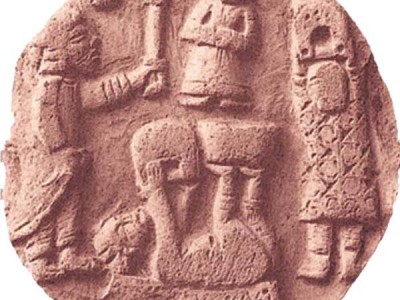
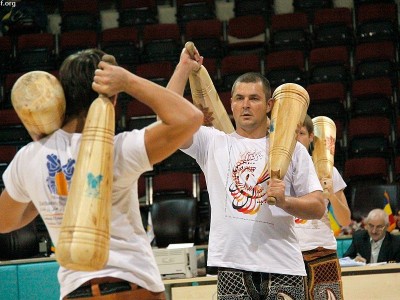
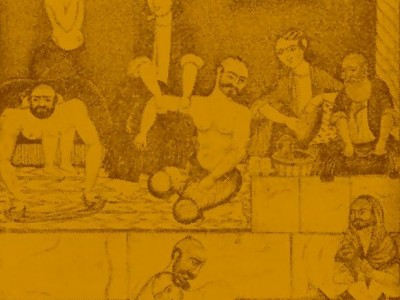
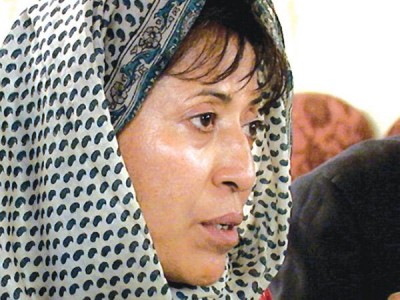

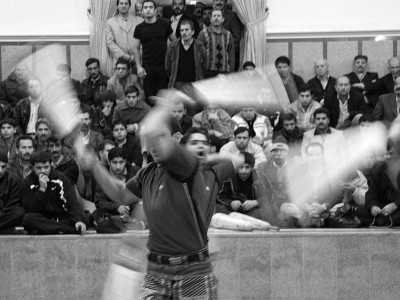
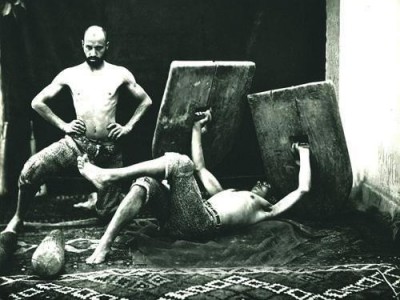



Contact Us
International Zurkhaneh Sports and Koshti Pahlavani Federation
Address: Iran, Tehran, Artesh Highway, Mini City, Naft Town, Suleiman Mosque Square, Sarai Mahalle Corner, Zorkhaneh Shahadai, Naft Town,
Postal Code: 1955673172
Contact number: 22495935
Subscribe now
Do not miss our latest news and reports.
Zorkhane is the house of strength, the ritual of hard work, cultivating the spirit of generosity, chivalry, patriotism and a combination of sports, art and politeness.
The traditional sport of Zorkhaneh is the sport of values. In its thousands of years of history, this traditional sport has played an important role in people's strength and physical and mental fitness. Zorkhane sport is a cultural and spiritual heritage and a good source for the development of public sports.
